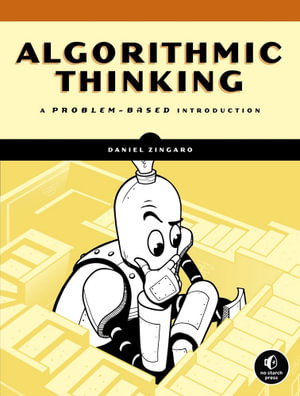
PublishedNo Starch, January 2021 |
ISBN9781718500808 |
FormatSoftcover, 408 pages |
Dimensions23.4cm × 17.7cm |
A hands-on, problem-based introduction to building algorithms and data structures to solve problems with a computer.
A hands-on, problem-based introduction to building algorithms and data structures to solve problems with a computer.
Algorithmic Thinking will teach you how to solve challenging programming problems and design your own algorithms. Daniel Zingaro, a master teacher, draws his examples from world-class programming competitions like USACO and IOI. You'll learn how to classify problems, choose data structures, and identify appropriate algorithms. You'll also learn how your choice of data structure, whether a hash table, heap, or tree, can affect runtime and speed up your algorithms; and how to adopt powerful strategies like recursion, dynamic programming, and binary search to solve challenging problems.
Line-by-line breakdowns of the code will teach you how to use algorithms and data structures like-
The breadth-first search algorithm to find the optimal way to play a board game or find the best way to translate a bookDijkstra's algorithm to determine how many mice can exit a maze or the number of fastest routes between two locationsThe union-find data structure to answer questions about connections in a social network or determine who are friends or enemiesThe heap data structure to determine the amount of money given away in a promotionThe hash-table data structure to determine whether snowflakes are unique or identify compound words in a dictionary
NOTE- Each problem in this book is available on a programming-judge website. You'll find the site's URL and problem ID in the description. What's better than a free correctness check?

